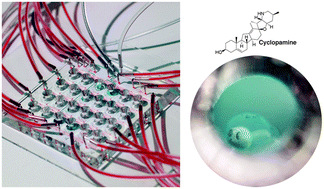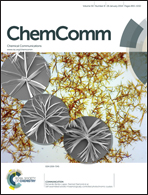Fish in chips: an automated microfluidic device to study drug dynamics in vivo using zebrafish embryos
Abstract
Interference of the Hedgehog (Hh) signaling pathway by cyclopamine leads to abnormal embryonic development. We monitor this dynamical drug effect in zebrafish embryos with highly precise microenvironment control using an integrated microfluidic device. This chip-based platform, which is programmable and automated, greatly facilitates the accuracy and reproducibility of the in vivo assays.


 Please wait while we load your content...
Please wait while we load your content...